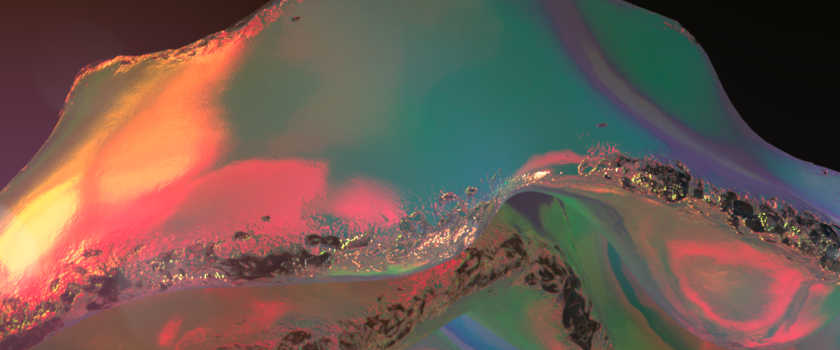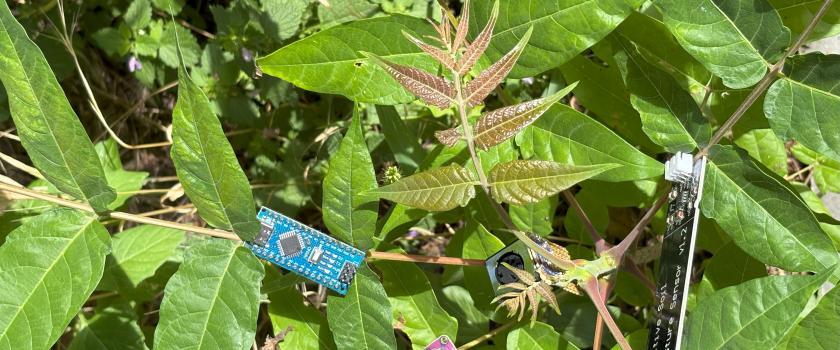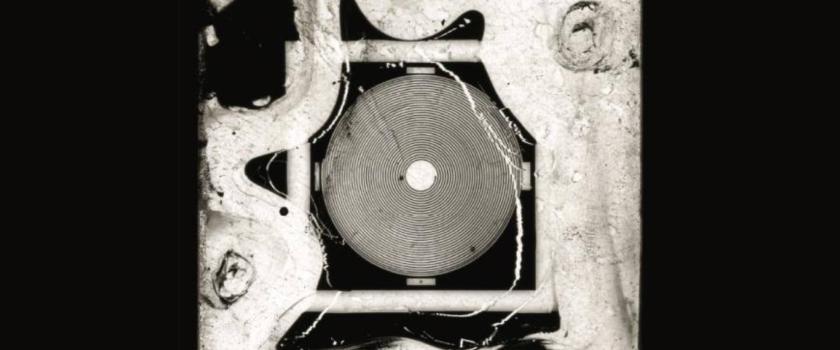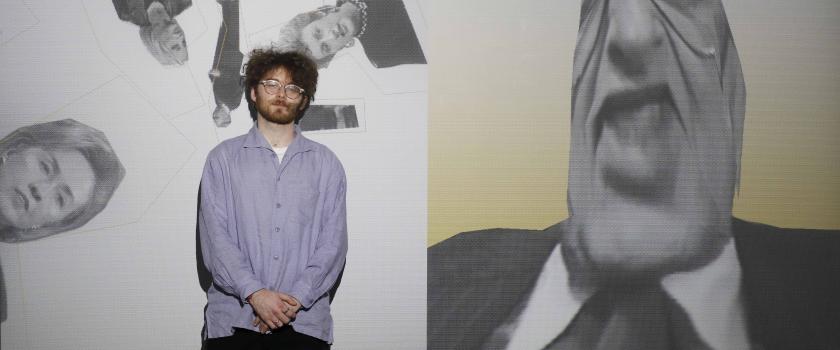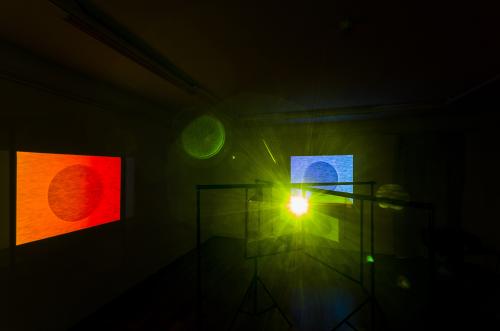Lucifer’s Commission / Light Revisited
Permanent exhibition of Bohuslav Woody Vasulka’s works at the VKB
The two rooms of Vasulka Kitchen Brno are fluidly functioning exhibition spaces, where short-term exhibitions responding to current events in the field of new media and contemporary art alternate with permanent exhibitions owned or on permanent loan to the association Vasulka Kitchen Brno.
Currently, Vasulka Kitchen Brno is exhibiting two works from the permanent exhibition, Lucifer’s Commission and Light Revisited.
Lucifer´s Commission
This series of prints or “studies” consists of frozen audiovisual motion parallels of works by Woody Vašulka. Their primary objective was largely didactic; to adequately describe the function of the tool utilised and create something of an encyclopaedia of invented procedures. Lucifer’s Commission (1977–2002) is comprised of historic glass computer circuit plates which, after many years, Woody rediscovered in his garden warehouse in Santa Fe. He ensuingly scanned them, as is, in their various states of decay.
Light Revisited – Noisefields
This installation is a reincarnation of the video Noisefields (1974), one of the Vašulka’s most famous works and for its hallucinatory nature, a viewer-favourite. The image structure directly refers to its derivation from electronic signals. A centre circle divides the screen into two halves that vibrate constantly in hypnotic fashion, in synchronization with sound. One half pulsates with colour while the other consists of the “noise” video (the “rough material” of the video). The piece allows video flickering, usually invisible, to be visualised, something that is usually hidden to create the illusion of a motion picture. Thus, it points out the role our own minds play in video perception. The video itself was realised through the use of a video sequencer made by George Brown, based on the request to separate the individual frames within the video. Their objective was to demonstrate that a video image arises through the succession of two half-frames, creating an altogether recognizable image. In Woody Vašulka’s Light Revisited (2002) the projection is divided onto three projected surfaces through the use of by the use of semipermeable chromatic dichroic mirrors.
